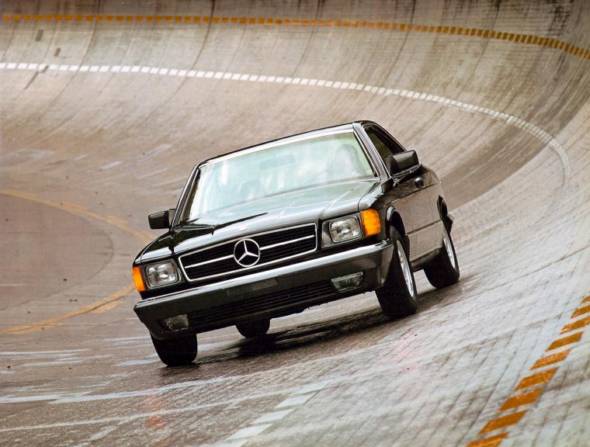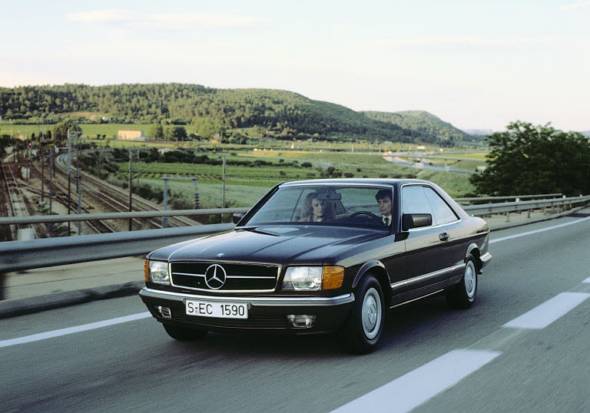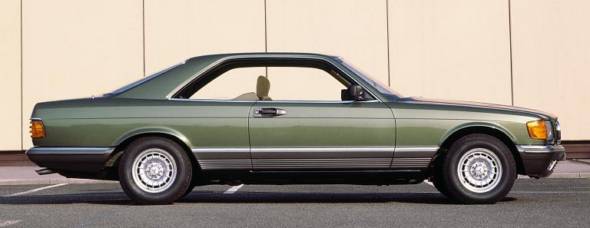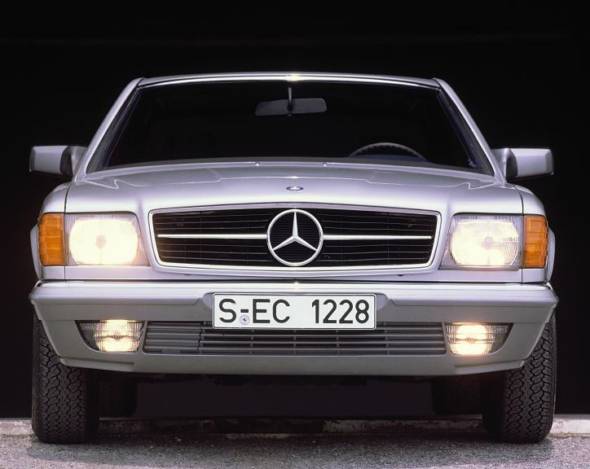Mercedes W126C SEC-Class 1981 – 1991

At the Frankfurt International Motor Show IAA, in September 1981, models 380 SEC and 500 SEC were presented.

They were coupe variants of series 126, succeeding the previous SLC models. In concept, the new coupe generation once again was based on the S-Class sedans and not, as their direct predecessor, on an SL model. A 6-cylinder variant analogous to the 280 SLC was not available

The V8-engines, already know in principal from the sedans and the SLC models, had been thoroughly redesigned within the “Mercedes-Benz Energy Concept” in order to reduce consumption and pollutants.
Next to an increase of compression, a camshaft with changed timing, air-circulated injection valves and an electronic idle-speed control device stood on the list of improvements.

Due to the changed cam shift adaptation the torque maximum could be shifted towards lower numbers of revolution.

In case of the 3.8-liter engine it was even increased. This aggregate was thoroughly changed. In order to obtain a more favourable volume-surface ratio the bore was reduced and the stroke increased.

Thus the modified 3.8-liter V8 showed a slightly increased displacement.

In both 8-cylinders slight power reductions had to be taken into account, compensated, however, by a considerably improved economic efficiency. In both cases the rear axle transmission ratio was adapted to the changed characteristics of the engine.

Thanks to all these measures the fuel consumption of the SEC coupes were drastically reduced in comparison to their preceding Types. Except for a few details the chassis corresponded to the sedans on which the vehicle was based.

Like those the coupes were also provided with a twin-control arm front axle as well as a semi-trailing arm rear axle with anti-squat control. For the first time the front wheels of the SEC coupes were equipped with floating calliper disk brakes.

Thus larger brake disks could be used and the brake cylinder was located at the better cooled interior side of the wheel. In principal the platform, too, came from the sedan. It was, however, reduced by 85 mm. Thus the wheelbase was 30 mm higher than in the preceding model.

The passenger cabin was also much broader as in the SLC models. The body had been constructed according to the newest insights of safety research and the construction principles, already applied at the sedans, were reinforced by further measures.

In order to compensate for the missing centre pillar the roof frame constructions had been improved and the A-pillars provided with welded-in high-strength pipes. Thus the coupes also corresponded to the high safety standards of the S-Class sedans.

Electrically operated belt hand-overs were an interesting detail of equipment. They belonged to the standard version of the SEC models and had the task to bring the seat-belt at all four seats into the field of vision and to be easily obtainable for driver and passengers alike.

On demand, an air bag for the driver and a seat-belt pretensioning device for the front passenger was available. The design of the new coupes was also based on the four-door cars. A relict of the SLC episode was the horizontal front grill typical for the SL.

From the very beginning, the most elegant and harmonic shape was a great success. It made the SEC coupe one of the most beautiful cars after the war. The two bumpers as well as the side protection strips were shaped analogous to the sedans. The front apron, however, was pulled further down, In it fog lamps were integrated.

A remarkable construction detail were the aerodynamically optimised door handle recesses which prevented them from getting dirty. Four years after the presentation of the SEC coupes, a comprehensive model improvement package was applied.

In September 1985, once again, a completely redesigned model range of the S-Class was presented at the Frankfurt Motor Show IAA. Besides a discreet face lifting, concerning primarily the bumpers, the side skirts and the wheels, a restructuring of the range of engines was in the forefront.


















































































































































































































































































































































































![1e50_12[1] 1e50_12[1]](/wp-content/gallery/w126c/thumbs/thumbs_1e50_12%5B1%5D.jpg)



















































![2788_12[1] 2788_12[1]](/wp-content/gallery/w126c/thumbs/thumbs_2788_12%5B1%5D.jpg)
















![2bb1_12[1] 2bb1_12[1]](/wp-content/gallery/w126c/thumbs/thumbs_2bb1_12%5B1%5D.jpg)







![3012_12[1] 3012_12[1]](/wp-content/gallery/w126c/thumbs/thumbs_3012_12%5B1%5D.jpg)










![3226_12[1] 3226_12[1]](/wp-content/gallery/w126c/thumbs/thumbs_3226_12%5B1%5D.jpg)






















































































































